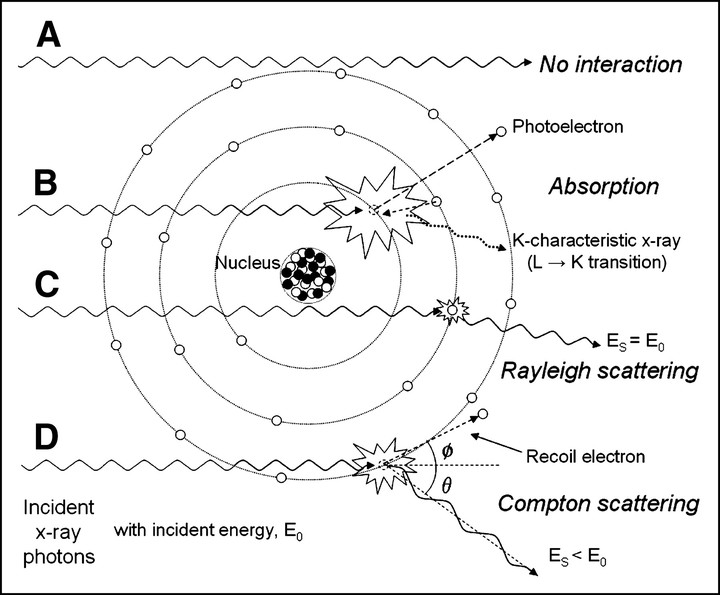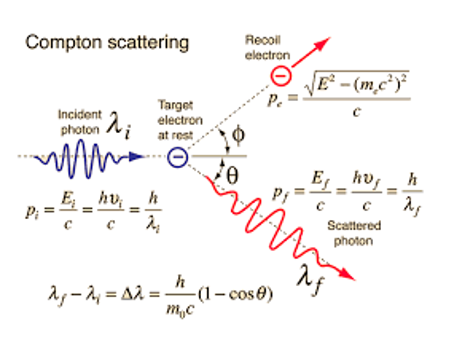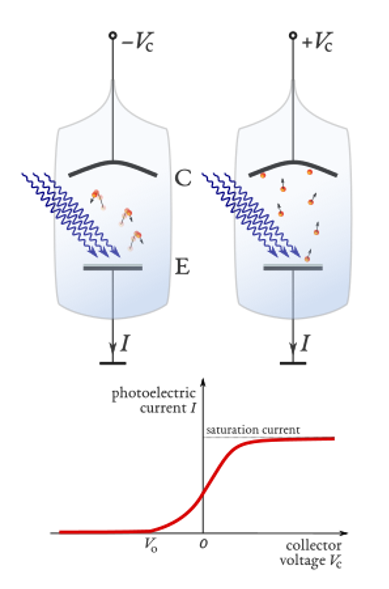Absorption of x-ray photon
What happens when an x-ray shooting the atom?

Compton Scattering
Compton scattering, discovered by Arthur Holly Compton, is the scattering of a photon by a charged particle, usually an electron. If it results in a decrease in energy (increase in wavelength) of the photon (which may be an X-ray or gamma ray photon), it is called the Compton effect. Part of the energy of the photon is transferred to the recoiling electron.
In 1923, Compton published a paper in the Physical Review that explained the X-ray shift by attributing particle-like momentum to light quanta. The energy of light quanta depends only on the frequency of the light. In his paper, Compton derived the mathematical relationship between the shift in wavelength and the scattering angle of the X-rays by assuming that each scattered X-ray photon interacted with only one electron.
$$\lambda ’ - \lambda = \frac{h}{m_{e}c}\left(1-\cos{\theta}\right)$$
where $\lambda$ is the initial wavelength, $\lambda ‘$ is the wavelength after scattering, $h$ is the Planck constant, $m_{e}$ is the electron rest mass, $c$ is the speed of light and $\theta$ is the scattering angle.

Photoelectric Process
The photoelectric effect is the emission of electrons when electromagnetic radiation, such as light, hits a material. Electrons emitted in this manner are called photoelectrons.
The photons of a light beam have a characteristic energy, called photon energy, which is proportional to the frequency of the light. In the photoemission process, when an electron within some material absorbs the energy of a photon and acquires more energy than its binding energy, it is likely to be ejected. If the photon energy is too low, the electron is unable to escape the material. Since an increase in the intensity of low-frequency light will only increase the number of low-energy photons, this change in intensity will not create any single photon with enough energy to dislodge an electron. Moreover, the energy of the emitted electrons will not depend on the intensity of the incoming light of a given frequency, but only on the energy of the individual photons.
